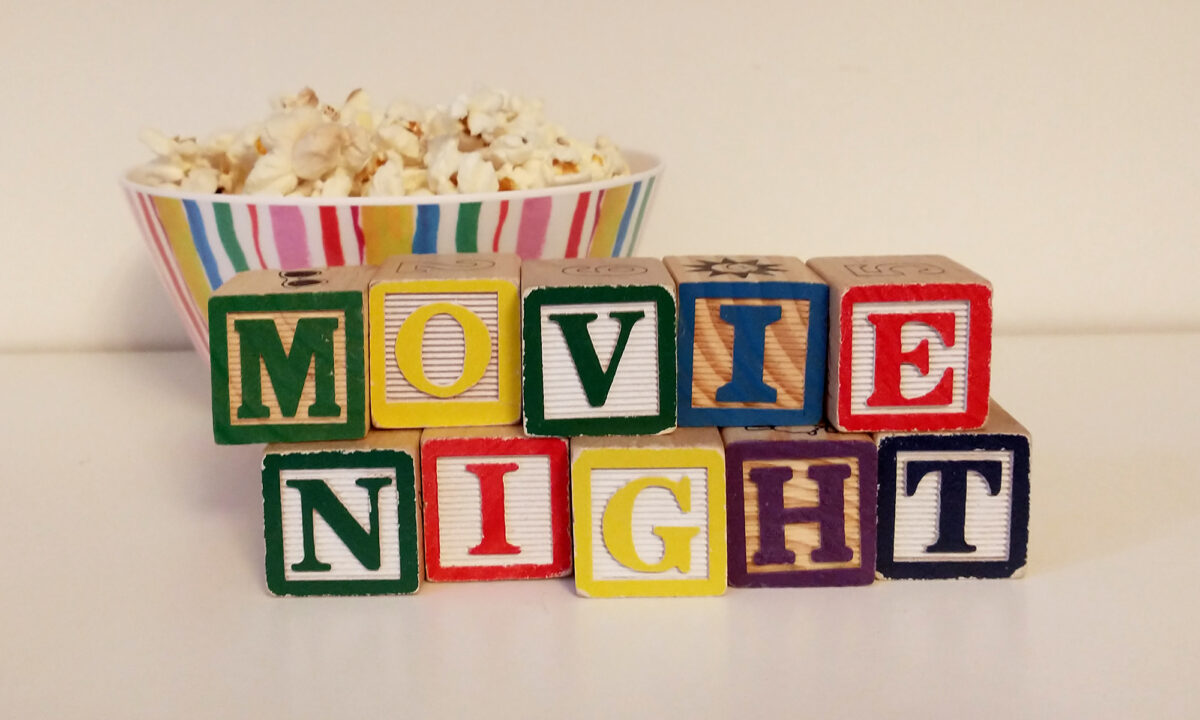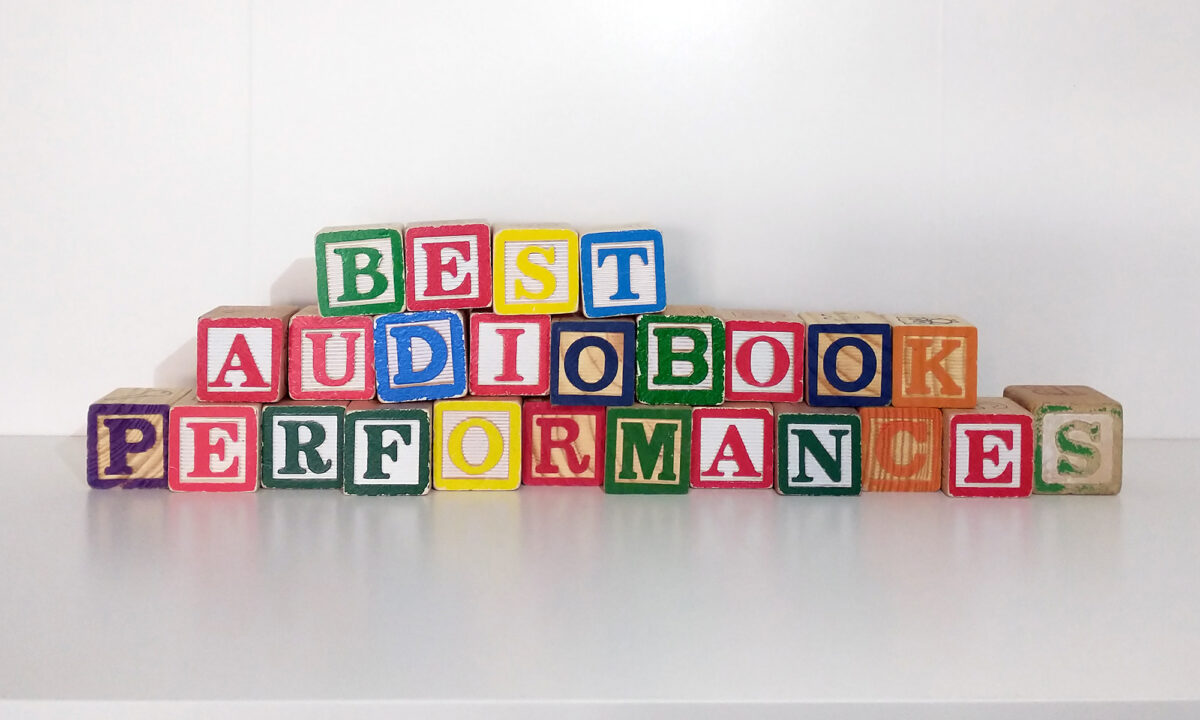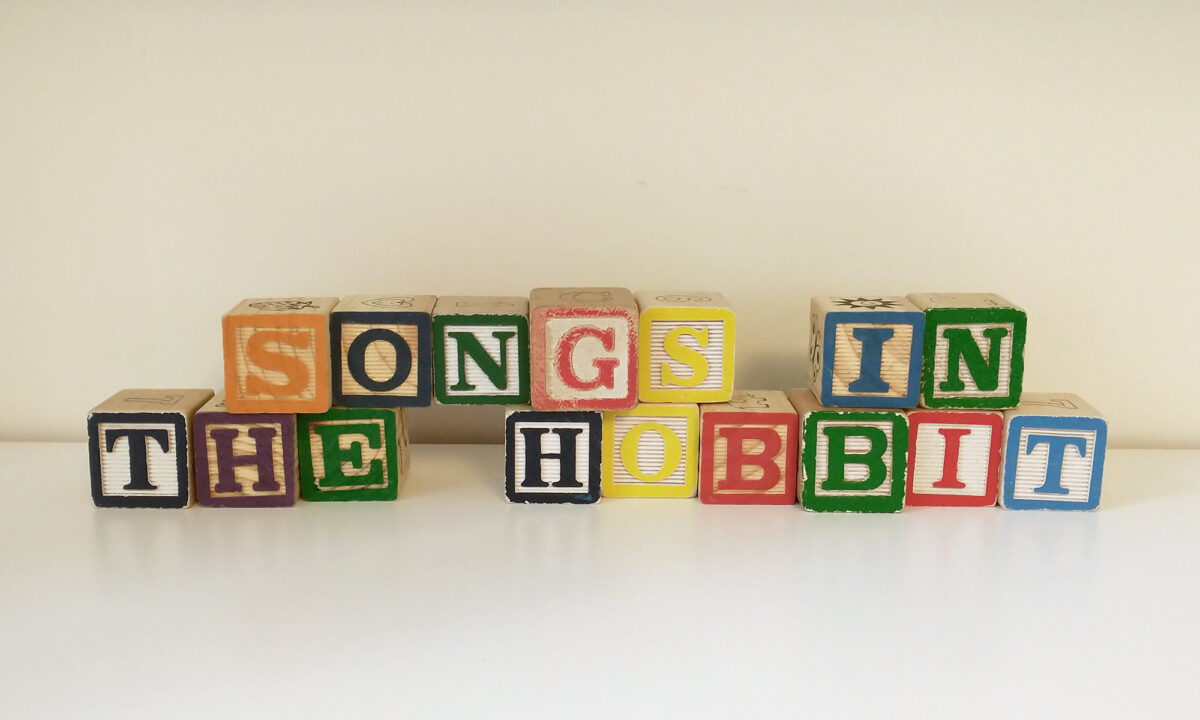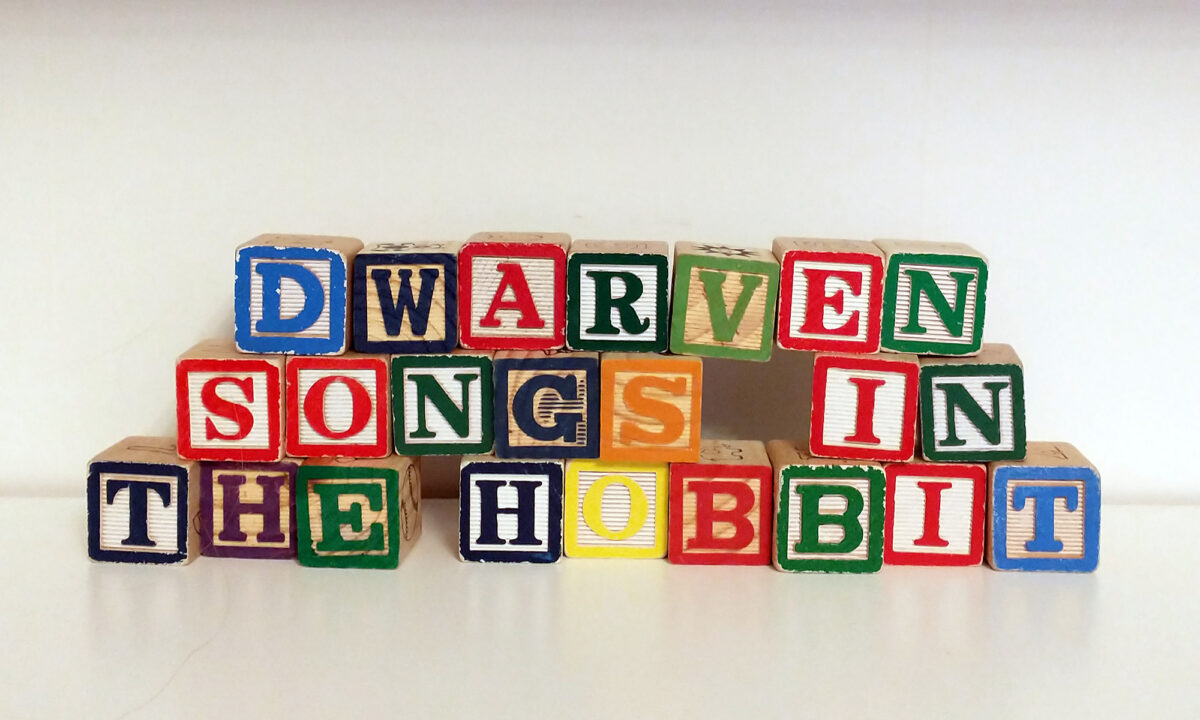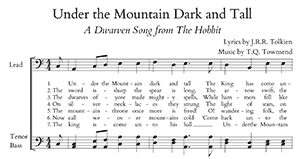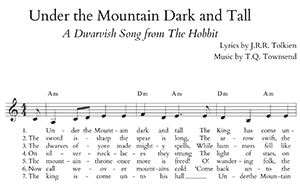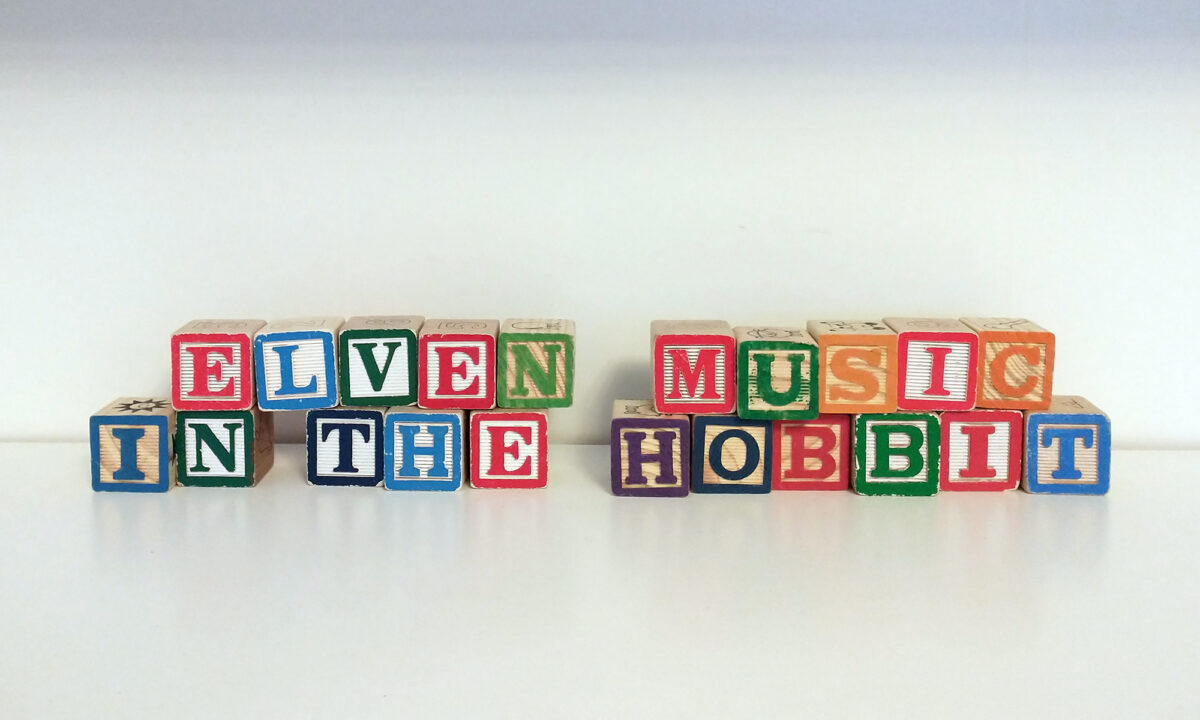This little video wasn’t long enough to be a regular episode, but I felt it was worth explaining that the TV show Rings of Power isn’t worth getting upset about because it’s not actually an adaptation at all. It has a lot more in common with what happened when me and my cousin played with action figures back in the day . . .
Tag: J.R.R. Tolkien
138 – Can Peter Jackson Recapture the Magic?
Podcast: Play in new window | Download
Subscribe: RSS
Peter Jackson is getting the band back together to make movies about . . . finding Gollum?? For real? Will these films be any good? Will this be another case of a filmmaker trying and failing to recapture the magic? Find out what I think about the prospects for these new films. Check out the video version to witness a perfect reenactment of what happened when I went to see The Phantom Menace in 1999, complete with butterfly hair clips.
123 – Film Predictions for 2024
Podcast: Play in new window | Download
Subscribe: RSS
This year three major films are coming out which are based on books written for children, and one more is coming out that is based on The Lord of the Rings, which many teenagers love. But are these adaptations going to be any good?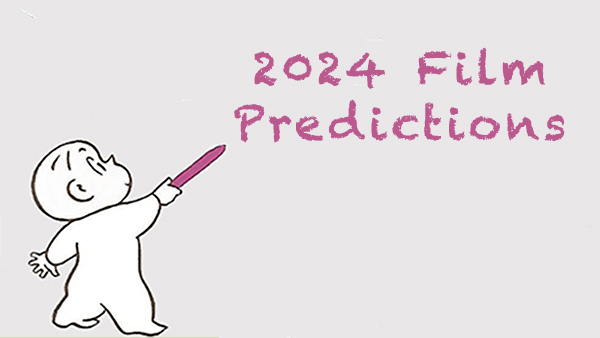 In this episode, I take a look at the upcoming films Harold and the Purple Crayon, Paddington in Peru, The Lord of the Rings: The War of the Rohirrim, and The Best Christmas Pageant Ever. Will they be good? Can these stories be adapted well to the screen? What mistakes should the filmmakers avoid?
In this episode, I take a look at the upcoming films Harold and the Purple Crayon, Paddington in Peru, The Lord of the Rings: The War of the Rohirrim, and The Best Christmas Pageant Ever. Will they be good? Can these stories be adapted well to the screen? What mistakes should the filmmakers avoid?
I offer my best guesses in answer to these questions, and I’ll be curious to see how much I get right.
43 – Best Audiobook Performances
Podcast: Play in new window | Download
Subscribe: RSS
Audio versions of children’s books can be a great way to keep up on “reading” when you don’t have time to sit down with a book. I listen to lots of audiobooks and prefer to hear authors reading their own work. However, voice actors can also give amazing performances, bringing characters to life in a way that really does justice to the author’s work.
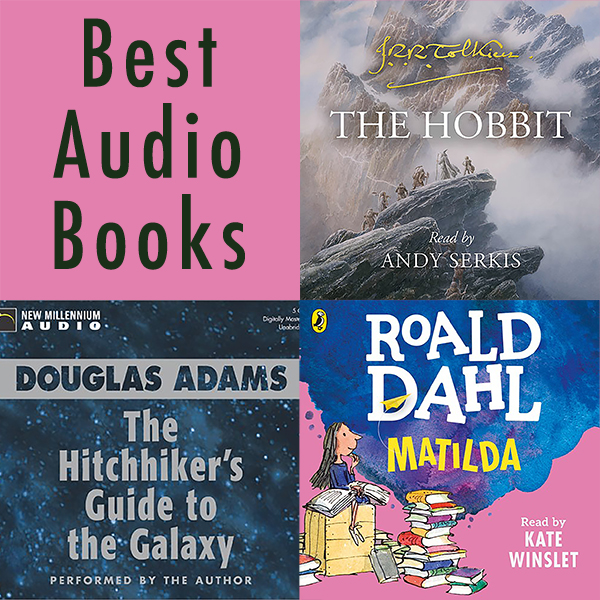
My favorite performances of books children will enjoy are:
-
-
- Matilda by Roald Dahl, read by Kate Winslet
- Charlotte’s Web and The Trumpet of the Swan by E.B. White, read by the author
- The Hitchhiker’s Guide to the Galaxy by Douglas Adams, read by the author (Note: good for teenagers, not younger kids)
- The Hobbit by J.R.R. Tolkien, read by Andy Serkis
-
Activity: Record your own Audiobook
Kids can have a lot of fun recording their own audio versions of their favorite stories. Any kind of story can be recorded, from a family memory to a well-known folktale. Students can adapt a longer tale, or just record part of it. Children can also try their hand at adding sound effects, experimenting with different objects to produce the right sound. Recordings could be done in a very simple way, using a phone or laptop to record audio in a single take, or you could try a more ambitious project involving editing, multiple audio tracks, and sharing the final result with others.
38 – Hobbit, Human, and Goblin Songs in The Hobbit
Podcast: Play in new window | Download
Subscribe: RSS
This is the last of a three part series on the songs in The Hobbit by J.R.R. Tolkien, covering the Hobbit, Human, and Goblin songs in the book. Tolkien wrote many wonderful lyrics in his books, but left behind no official melodies. However, it’s possible to examine the text to get an idea of the instrumentation, rhythm, performance style, and setting for a song.
By following clues in the text, I have come up with tunes for the two songs Bilbo sings when trying to distract giant spiders away from his dwarf friends. I have also written a fuller piece as a musical experiment to reproduce the sounds described in Chapter 10, where the people of Lake-town sing “The King Beneath the Mountains” to celebrate the return of the dwarves to the Lonely Mountain. I gave myself the following rules to follow:
-
-
- The song is sung by a large group of people, with more joining in as the song goes on
- The only instruments used are fiddles and harps
- The song is spontaneous and sung with great excitement in a group that is spread out in a large space, so the rhythm will not always be exact and the harmonies will not always lock perfectly
- There is shouting during the song
- People of all ages sing the song
- The mood should be joyful and excited
- The meter is 4/4 as the lyrics are written with iambic feet.
-
Here are the results in an audio track. I have also put the song on YouTube to make it easy for parents, teachers, and readers of The Hobbit to find it.
This is just one possible interpretation of the music. Parents, teachers, and young readers can all have fun writing melodies for Tolkien’s lyrics in The Hobbit, and I would love to hear what you come up with!
Mentioned in the episode is the music of From Wilderland to Western Shore, which is a very well done album of Tolkien’s songs performed in a modern bluegrass style. Check them out!
Here is free sheet music for this arrangement. You can find more songs from The Hobbit and other books on my music page.
Sheet music arranged for solo voice and guitar or ukulele
Sheet music arranged for SATB choir
Activity: Write Goblin “Music”
Tolkien’s lyrics in The Hobbit usually have smooth rhythm and excellent use of alliteration and rhyme. But Goblin lyrics change patterns frequently and are intentionally harsh sounding.
Have students examine one of the three Goblin songs in The Hobbit, and as a group come up with a performance of the lyrics. Find unusual percussion items that make sharp, clashing noises to use. Try growling, shouting, croaking, or using other sounds that usually aren’t used in music. Share the results of your musical experiment with an audience if you can!
37 – Dwarven Songs in The Hobbit
Podcast: Play in new window | Download
Subscribe: RSS
Dwarven songs in The Hobbit by J.R.R. Tolkien feature 4/4 time signatures, rich instrumentation, and deep male voices singing in harmony. Although Tolkien never wrote any music for his song lyrics, it’s possible to imagine possible melodies based on his descriptions of the music.
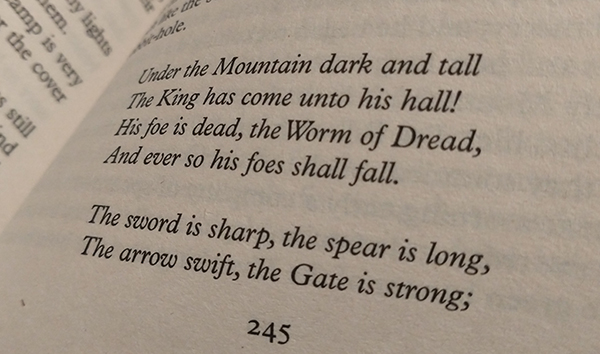
Unlike the happy, lilting jigs and waltzes of the Elves, Dwarven songs are richly ornamented, develop slowly, and describe real world events in intricate detail. Their songs can be silly, hopeful, or sad, revealing that Dwarves feel deeply and are more sensitive than one might at first think. The songs sung by the Dwarves tell of their love of lavishly beautiful things, their long memories, and their quest to reclaim the homeland and treasure that was stolen from them.
I have written some music to go with the lyrics of “Under the Mountain Dark and Tall,” trying to create something that matched what Tolkien described. These were the musical requirements based on what I read in Chapter 15 of The Hobbit:
-
-
- Maximum of 12 musicians
- 4/4 time signature as this matches the rhythm of Tolkien’s chosen poetic meter
- I can only be sure that the musicians know how to play fiddles, harps, drums, clarinets, flutes, and viols and so should choose from among these instruments
- The song is “warlike”
- All singers are male with deep voices
- Tolkien says the song is much like “Far Over the Misty Mountains” in Chapter 1, which is slow in pace, adds instruments and voices gradually, and evokes the imagination
- The music should take advantage of the acoustics of a large, cavernous space
-
I was limited to using mainly software-generated instruments and my soprano voice, so the result isn’t ideal but I think it at least gives listeners one possible interpretation of Tolkien’s words. If any male singers wished to perform this song I would be happy to hear that as it would make for a better musical experiment.
Here is the audio for “Under the Mountain Dark and Tall” as well as a link to a video on YouTube:
Sheet Music for “Under the Mountain Dark and Tall”
words by J.R.R. Tolkien and music by T.Q. Townsend
Arranged for a small mens’ choir
Arranged for solo singer with chords for guitar or ukulele
Activity: Write Music for a Dwarven Song
Choose one of the four dwarven songs written out in The Hobbit. The traits of each song as described in the book are written below. Songwriters may choose to follow these traits closely or follow their inspiration in a different direction. This activity would work well as a songwriting exercise in a music class but should only be offered for extra credit in a literature class. New songwriters may find it useful to recite the lyrics out loud with the desired rhythm, then begin singing out notes that seem to fit.
Chapter 1: “Chip the glasses and crack the plates”
Group singing: Thorin Oakenshield, Dwalin, Balin, Kili, Fili, Dori, Nori, Ori, Oin, Gloin, Bifur, Bofur, and Bombur
Poetic meter: trochaic tetrameter
Musical time signature: 4/4
Instrumentation: Medium sized male choir, possibly dishes or hand and foot movements used as percussion
Chapter 1: “Far Over the Misty Mountains Old”
Group singing: Thorin Oakenshield, Dwalin, Balin, Kili, Fili, Dori, Nori, Ori, Oin, Gloin, Bifur, Bofur, and Bombur
Poetic meter: iambic tetrameter
Musical time signature: 4/4
Instrumentation: Small male choir with fiddles, flutes, drum, clarinets, viols, and harp
Chapter 1: “Far Over the Misty Mountains Old” (Reprise)
Group singing: Thorin Oakenshield
Poetic meter: iambic tetrameter
Musical time signature: 4/4
Instrumentation: Male solo a capella
Chapter 7: “The Wind Was on the Withered Heath”
Group singing: Thorin Oakenshield, Dwalin, Balin, Kili, Fili, Dori, Nori, Ori, Oin, Gloin, Bifur, Bofur, and Bombur
Poetic meter: iambic tetrameter
Musical time signature: 4/4
Instrumentation: Small male choir singing a capella
Chapter 15: “Under the Mountain Dark and Tall”
Group singing: Dwalin, Balin, Kili, Fili, Dori, Nori, Ori, Oin, Gloin, Bifur, Bofur, and Bombur
Poetic meter: iambic tetrameter
Musical time signature: 4/4
Instrumentation: Small male choir with harps and other instruments
36 – Elven Songs in The Hobbit
Podcast: Play in new window | Download
Subscribe: RSS
The Hobbit by J.R.R. Tolkien has the lyrics for many songs, but no official melodies. What might these songs sound like if we follow clues in the text? In the first of three episodes about the music in The Hobbit, we explore the rhythmic structure, instrumentation, and performance style of the book’s five elven songs. The elves of Rivendell sing lilting jigs and waltzes, and dockworkers from Mirkwood sing sturdier songs with a 4/4 beat. Most songs are performed a capella, and the only instrument mentioned is the harp.

Tolkien once wrote a letter to a composer saying that he was “honoured” when a musician was inspired by his writing, as he was very fond of music although did not know how to create it himself. Readers of all musical abilities can have fun writing their own melodies to sing to go along with the elven lyrics in The Hobbit.
Because music is so professionalized these days, amateur artists can often feel that they shouldn’t even try writing a song. But this shouldn’t be the case! Anyone can sing, and anyone can come up with a simple melody. To prove it, I submit my own little composition. I gave myself just one evening to write and record the melody, although I did come back later to arrange the sheet music. I’d be honored if you gave my version a try, and I would love to hear what you come up with! These arrangements may be freely used for non-profit enjoyment.
Here is the audio of my arrangement of “Sing All Ye Joyful” lifted out from the episode, as well as a link to the song on YouTube.
Sheet Music for “Sing All Ye Joyful”
words by J.R.R. Tolkien and music by T.Q. Townsend
Arranged for SATB choir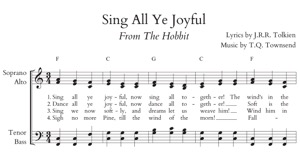 Arranged for solo singer with chords for guitar or ukulele
Arranged for solo singer with chords for guitar or ukulele
Activity: Write a Melody for an Elven Song
Choose one of the five elven songs written out in The Hobbit. The traits of each song as described in the book are written below. Songwriters may choose to follow these traits closely or follow their inspiration in a different direction. This activity would work well as a songwriting exercise in a music class but should only be offered for extra credit in a literature class. New songwriters may find it useful to recite the lyrics out loud with the desired rhythm, then begin singing out notes that seem to fit.
Chapter 3: “O! What Are You Doing?”
Group singing: Elves of Rivendell
Poetic meter: dactylic dimeter
Musical time signature: 6/8 Jig
Instrumentation: Many male and female voices singing a capella
Chapter 9: “Roll, Roll!”
Group singing: Worker elves of Mirkwood
Poetic meter: spondaic dimeter
Musical time signature: 4/4 March
Instrumentation: Small male choir singing a capella
Chapter 9: “Down the Swift Dark Stream You Go”
Group singing: Worker elves of Mirkwood
Poetic meter: trochaic dimeter
Musical time signature: 4/4 March
Instrumentation: Small male choir singing a capella
Chapter 19: “The Dragon is Withered”
Group singing: Elves of Rivendell
Poetic meter: dactylic dimeter
Musical time signature: 6/8 Jig
Instrumentation: Many male and female voices singing a capella
Chapter 19: “Sing All Ye Joyful”
Group singing: Elves of Rivendell
Poetic meter: dactylic tetrameter
Musical time signature: 3/4 Waltz
Instrumentation: Many male and female voices singing a capella

